What is an animation pipeline?
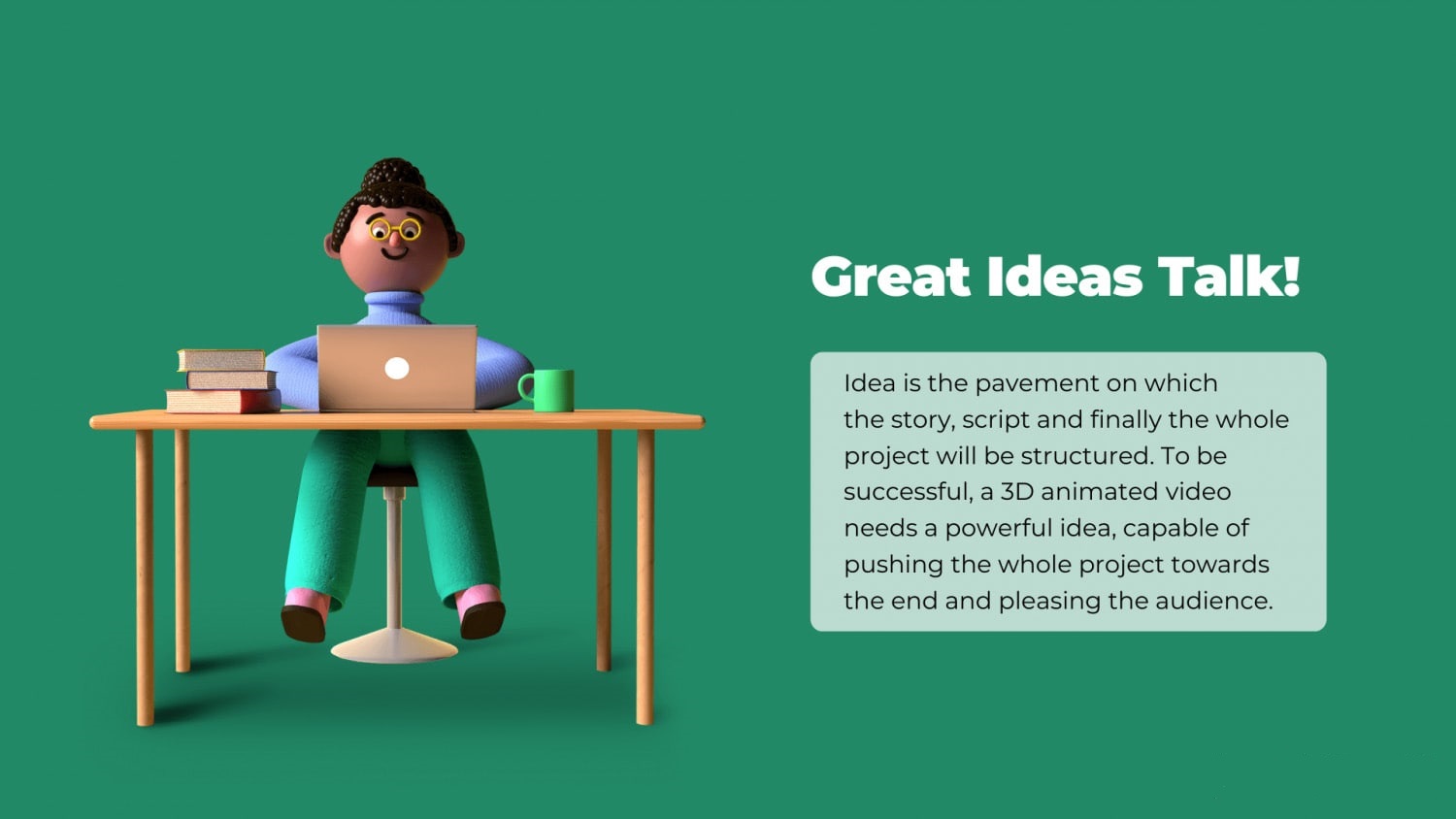
Script Writing:
- The script is the formal, written, literary version of the story, including the character movements, environment, time, actions, and dialogues.
Storyboarding:
- A storyboard is a non-moving visual version of the script. It basically looks like a comic book, including early ideas of camera staging, major character poses, or scene events.
- storyboarding fundamentals in 3D animation Production
Animatic:
- A moving form of the storyboard is called the animatic which will evolve into the final edit of the entire project. The animatic is created in its most simple form, portraying the sequence timing of the project through 2D storyboard drawings.
- Animatic in a nutshell; the storyboard made animated.
Design:
- The final look of the project is decided at this stage, including the concept design, character design, costumes, prop design, and environment. The mood and the concept of designs must be fully conveyed here. If you want to know the ins and outs of character design, check out the article about shape language in character design.
- Read more to find out what we talk about when we talk about design in animation pre-production.
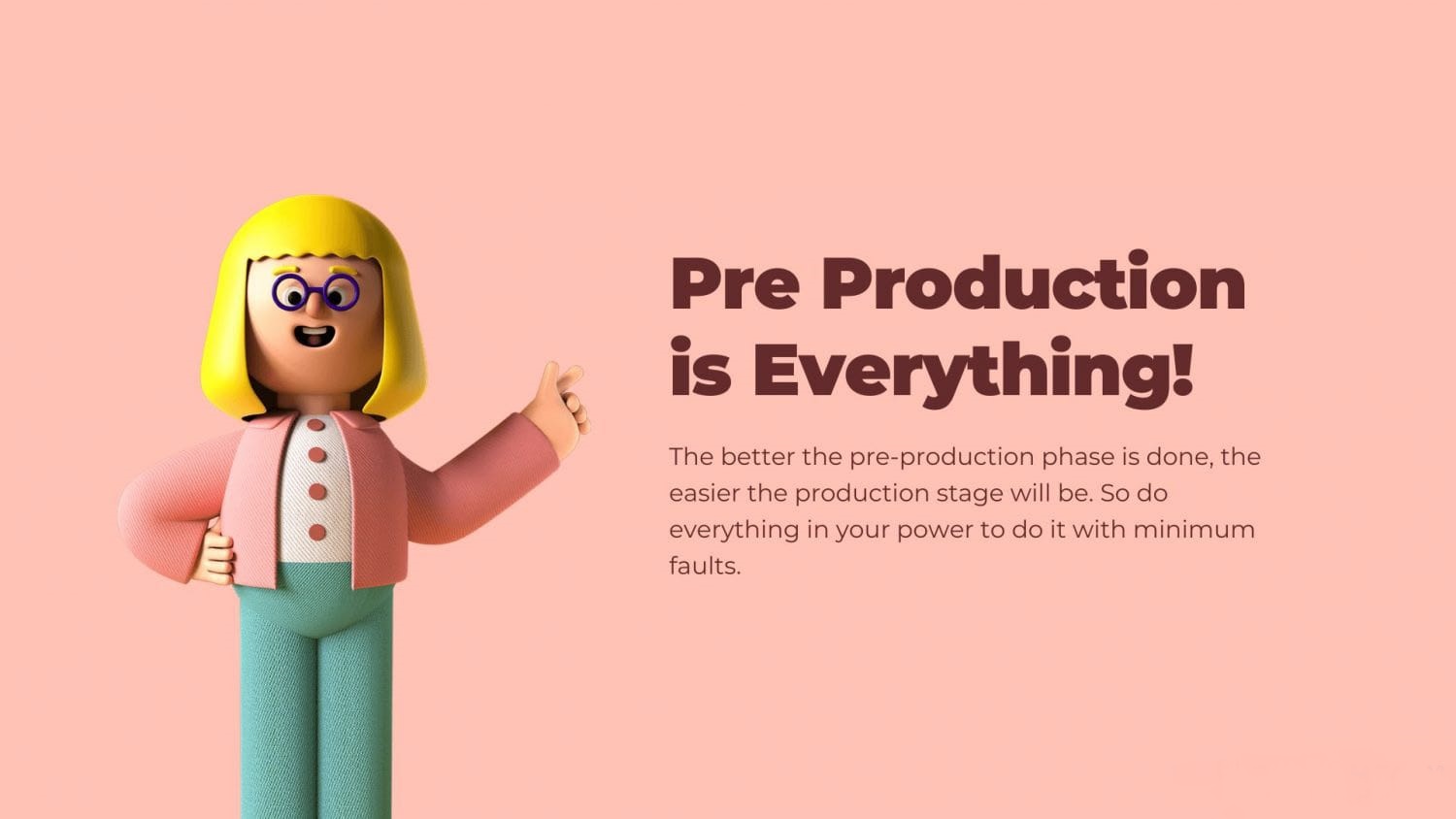
2- What is the 3D animation production process?
The production stage is where all previous efforts must pay off and transform into action. At this stage, visual elements of the 3D animation will be handed out to the designated teams and artists. Team leaders make sure time frames, and quality matches those of the determined plan in the pre-production stage and goes as smoothly as possible. The outcome of this stage shapes the entirety of the 3D animation.
The production stage consists of the following steps:
3D Layout:
- Simply put, a 3D version of the 2D animatic is called a 3D layout. The 3D layout contains basic 3D attributes such as the characters’ size, shape, environment, a simple animation of the characters, proxy geometry, et cetera.
- Curious to know more? Here you can find out what exactly a 3D animation layout is and why it matters with an example.
3D Modeling:
- 3D modeling is the process of developing a geometric surface representation of any object in a specialized 3D software such as Maya or 3Ds Max.
- Here’s a quick guide to 3d modeling you can take a look at for more.
3D Texturing:
- The process of creating and applying textures (colors and surface properties) to a 3D model is called 3D texturing. Before coming to the texture artist, 3D models are usually in a default shaded flat color.
- For more information, you can take a quick look at texturing in 3d animation production. If you want to get a more in-depth guide on how to use color, check out the color theory in animation production.
3D Rigging:
- During the rigging process, a bone structure is put into the 3D object so that the animators can move different parts of the geometric object (in character rigging, for example) as quickly and efficiently as possible.
3D Animation:
- The movements of the 3D objects or characters in a scene or setting are created during the animation stage. Animation is usually the most crucial and time-consuming part of producing a 3D animated video.
- Interested in learning to animate? Check out Animation Mentor’s ultimate guide to animation for beginners.
VFX:
- A 3D animator animates almost everything, but elements like hair, fur, water, fire, clothes, or dust; key-framing them would be too difficult or even impossible.
- These elements are created during the VFX component of the pipeline; there are things you might not know about the visual effects stage in 3D animation production.
Lighting:
- Just like real-world lighting in photography or filming, 3D animation lighting is the stage at which the mood of a 3D scene or sequence is created through light based on the pre-production designs.
- For more information, you can take a look at the ultimate guide to lighting fundamental for 3D.
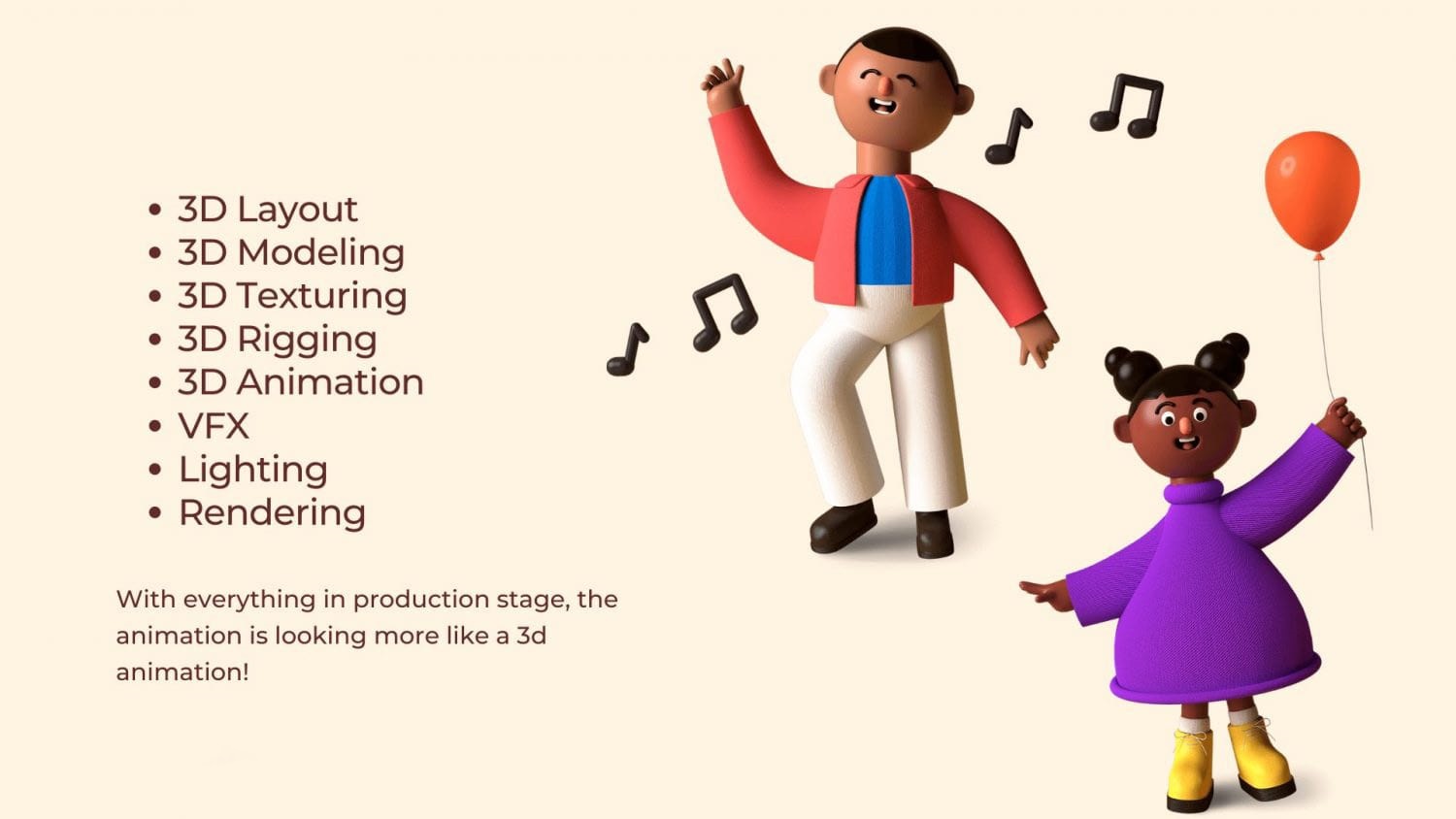
Rendering:
- When dealing with a 3D animation, every scene is separated and rendered into multiple layers, including objects, colors, background, foreground, shadows, highlights, et cetera. The layers are going to be united again in the post-production stage (Compositing).
- If you are curious to find out more, take a look at the final step in 3D animation production: 3D rendering.
3- What is the animation post-production process?
At this stage, the final touches are added to the project to make it look polished and professional (the definition of polished and professional might differ in various projects, of course). Post-production artists have a number of tools that can make up the look of a project in whatever way they want.
Post-production in the 3D animation pipeline includes:
Compositing:
- To make a final output, the layers rendered previously are put together again in compositing. The layering process can be as simple as putting 2 layers together or as complex as matching hundreds of layers and adjusting their properties.
- You can get more familiar with composition in animation.
2D VFX:
- Some visual effects, such as sparks, dust, raindrops, camera shakes, et cetera, are more easily achieved in a 2D environment at the end of the project without sacrificing the quality. These effects are usually mixed with other layers in compositing.
- Take a quick look at the 2D vx component of the 3D animation workflow for more on the subject.
Color correction:
- Also known as color timing or color grading, color correction is literally the last adjustment we make to a 3D animation in the pipeline. This step makes each shot and the whole project look more consistent.
- Read more: A quick look at color correction production.
Final output:
- There are different options out there regarding the output format of the pipeline. However, the most common type is a digital video which is compatible with most digital devices and can be played on the internet.
Here is a short guide on choosing the right format for a video file.
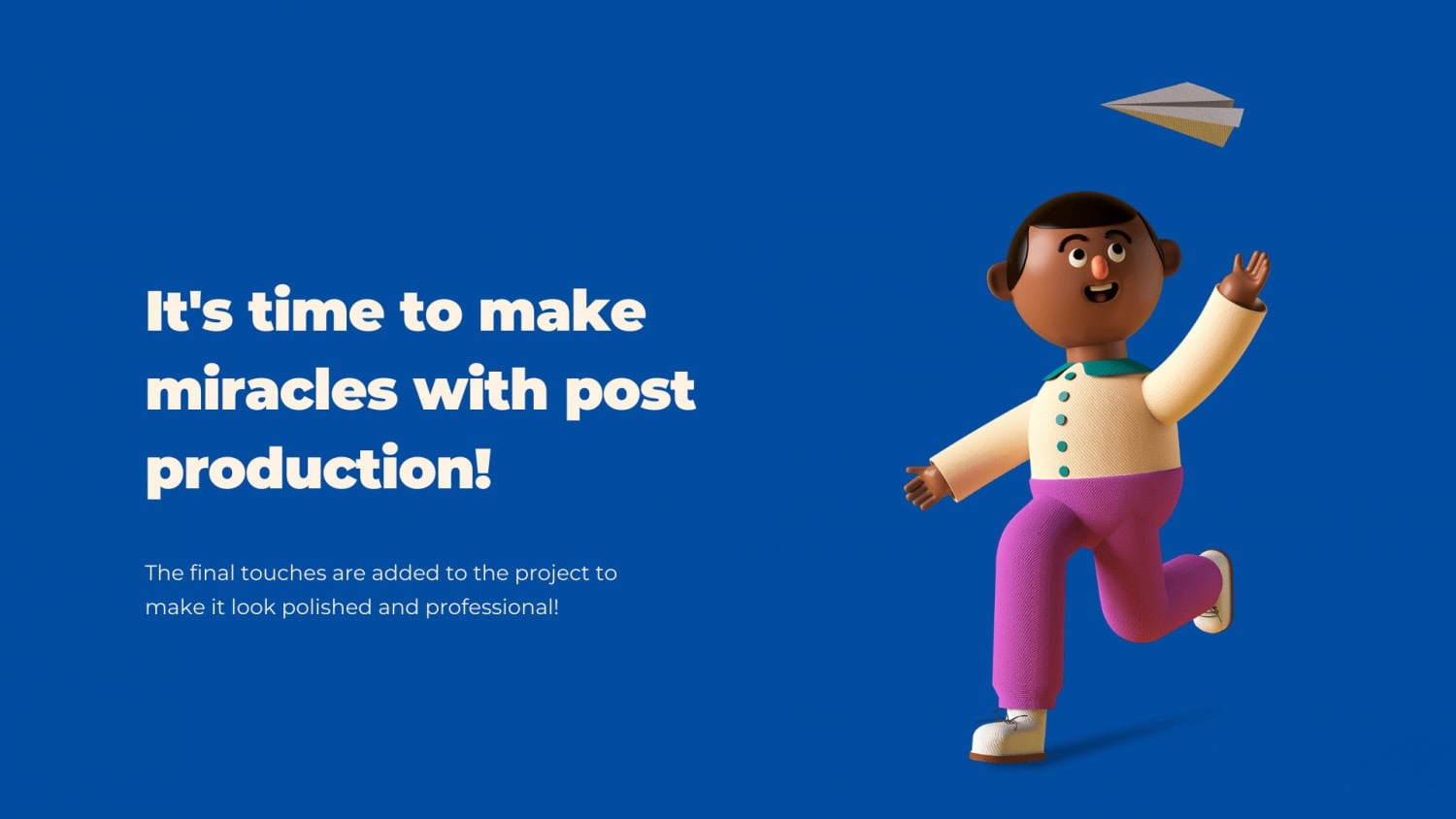
What is the difference between 3D animation and CGI pipeline?
CGI stands for Computer-generated imagery and is defined as using computer graphics to make or utilize images in art, game art, feature films, and series, TV series, commercials, etc. There’s no difference between CGI and 3D animation as both use the same techniques and methods to create and use art in different ways.
If you want to know about the 2D animation pipeline, check out our other article about the 2D animation production process.
Why do we use a pipeline for 3D animation production?
You can picture the 3D animation pipeline as a creative assembly line in which everything is planned out, from conception to publishing. The entire pipeline might consist of as many as 500 artists or as few as 2. The most significant point of having a workflow in place is that every single one of these artists must know what, when and how exactly the tasks in hand should be done and handed out to the next artist or group of artists.
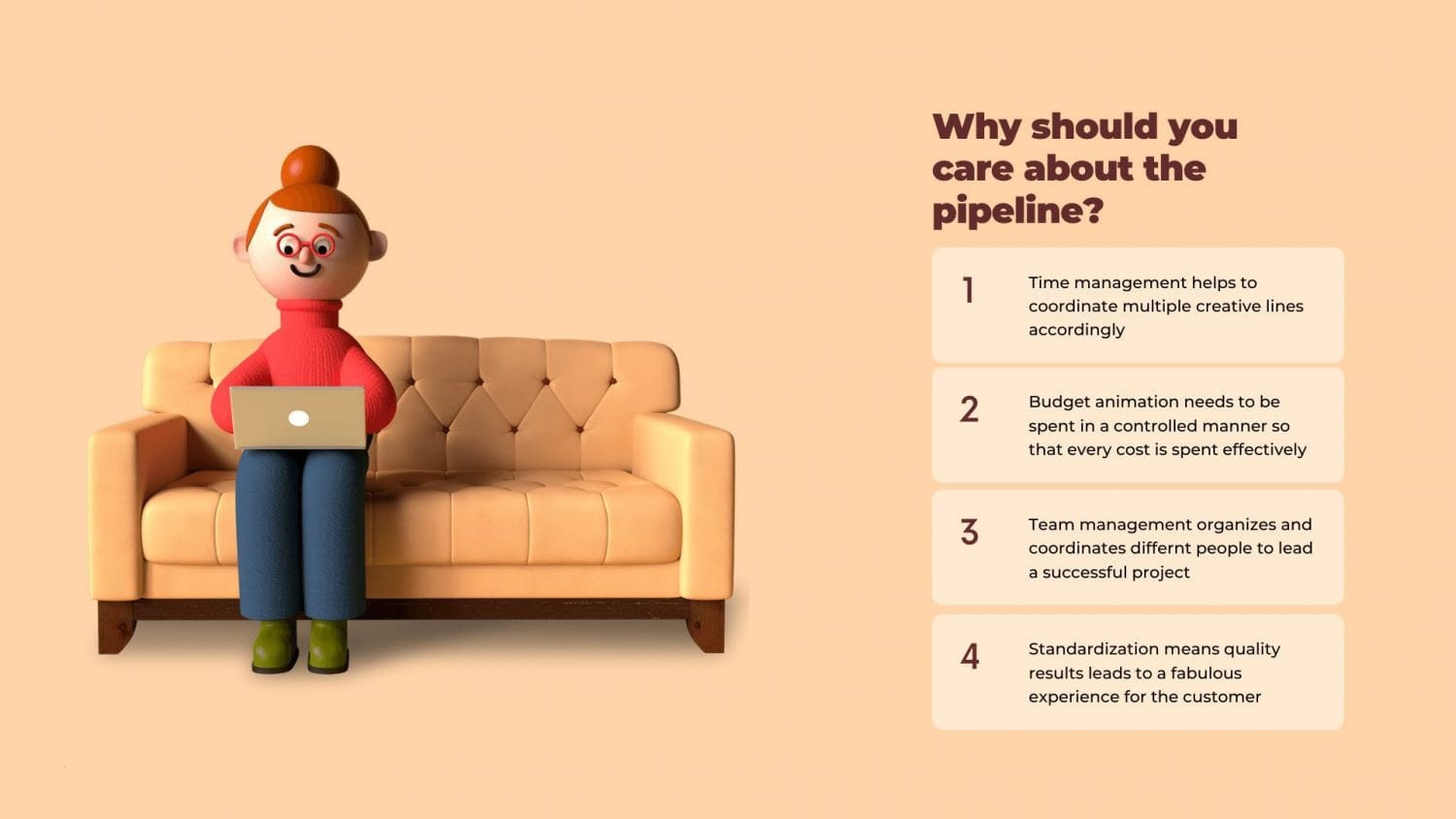
Generally, there are 4 main reasons for using a pipeline in 3D animation production:
Time management:
- Producing 3D animation, especially feature films and 3D animated serious, is a complex and time-consuming endeavor in nature. When accumulated, even minor micro-delays in each step can postpone the outcome and lead the whole project towards a financial disaster created by a domino effect. So there needs to be a detailed time frame for each step and a grand plan to coordinate multiple creative lines; accordingly, some of which are supposed to be done simultaneously.
Budget management:
- Although depending on multiple factors 3D animation costs and budgets might vary, most of the time a significant amount of money is involved, and it needs to be spent in a controlled manner to be effective. The ROI of most 3D animation projects is calculated before the production is started.
Team management:
- The number of people involved in an animation project can be as much as 500. These people are usually split into multiple teams and groups, most of which must work in coordination for the project to be successful. The significance of managing these teams and individuals with different responsibilities and skills is something you don’t want to ignore at all.
Structuring and standardization:
- A thought-out pipeline is the most efficient way to make sure everyone is on the same page and working towards the same goal. Moreover, professional animation studios like Dream Farm produce hundreds of 3D animations per year for a variety of clients. Making sure each and every one of these animations are created with an adequate amount of precision and quality and providing the clients with the same fabulous experience every time can definitely set you apart from the competition, bringing in even more clients.
How to get started in animation production (FAQ)
Let’s look at some of the questions that our readers have asked after reading our blog. We’ve listed the questions with short answers to get you going.
1. What do I need to get started in animation production?
The bare minimum is a mid-range computer (or something a bit beefier if you have your heart set on 3D animation) and some animation software plus a great deal of passion for learning animation.
2. Do you need to know how to draw to be a good animator?
Not necessarily but it certainly helps, especially if you’re working for a smaller studio where lots of jobs in the animation pipeline are your responsibility. Design, character creation, storyboarding and other artistic elements of putting an animation together will be impossible for you if you can barely cobble together a stick person.
3. How is animation a career?
It can be tough, isolating, competitive and repetitive, but that’s exactly why you need to have a passion and a love for what you do.
Animation is also immensely rewarding and inspiring. It gives you a chance to be creative and remain on the forefront of technological development; the people are amazing and with the entertainment industry, it’s always interesting.
4. How do you make a great animation portfolio?
Your portfolio is you. It represents who you are as an artist, so it needs to contain your very best work and demonstrate your varied skills in a short amount of time. No pressure. Here’s our quick set of tips for creating an amazing animation demo reel:
- 30-45 seconds. Chances are, the person looking through your portfolio has a long list to get through and has watched hours of portfolio footage in their time, keep it snappy and be ruthless with what makes the cut.
- Simple to navigate. Stick to Vimeo.
- Multiple short clips. These will keep the viewer’s attention with their momentum and variety, giving you the opportunity to show off the different styles and mediums you’re great at.